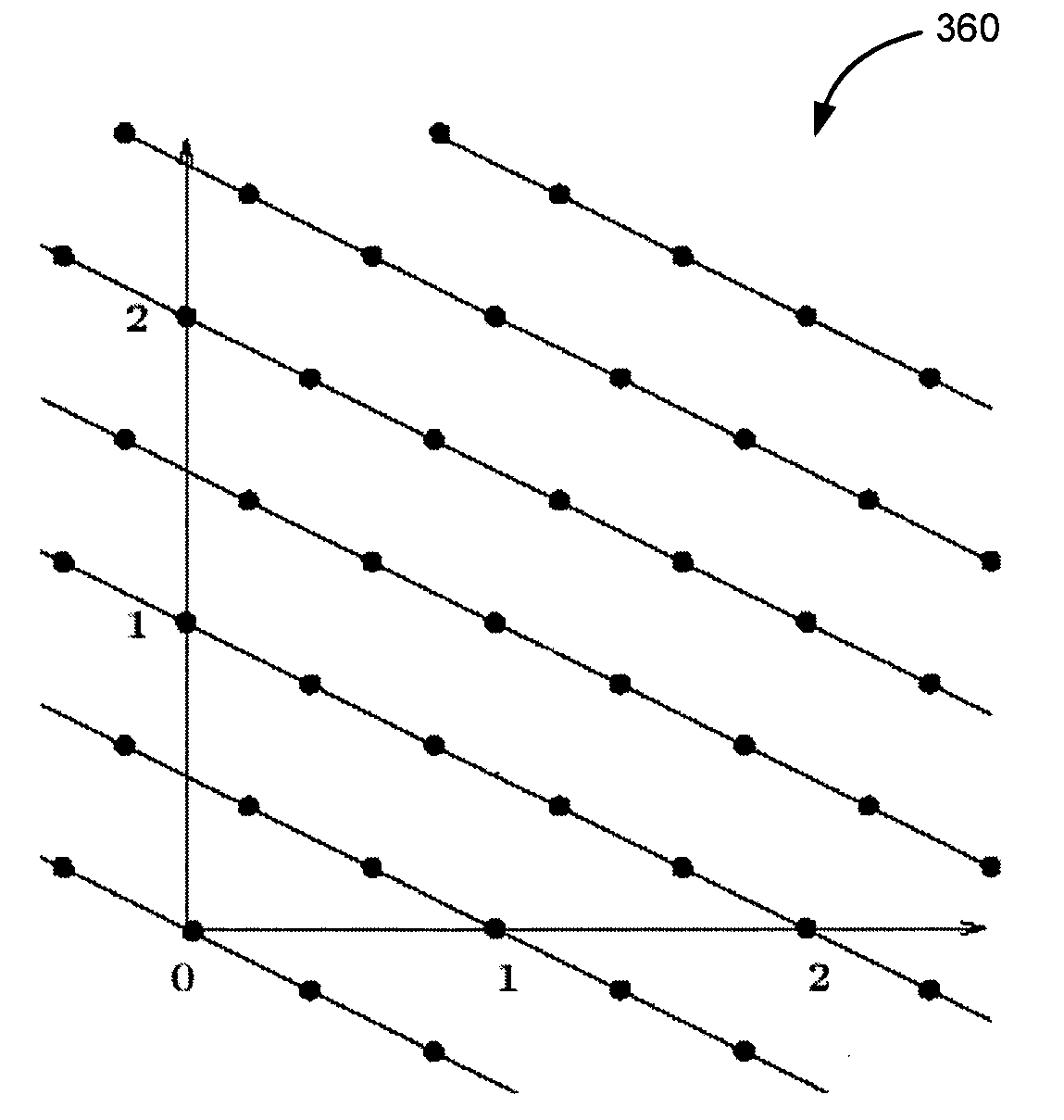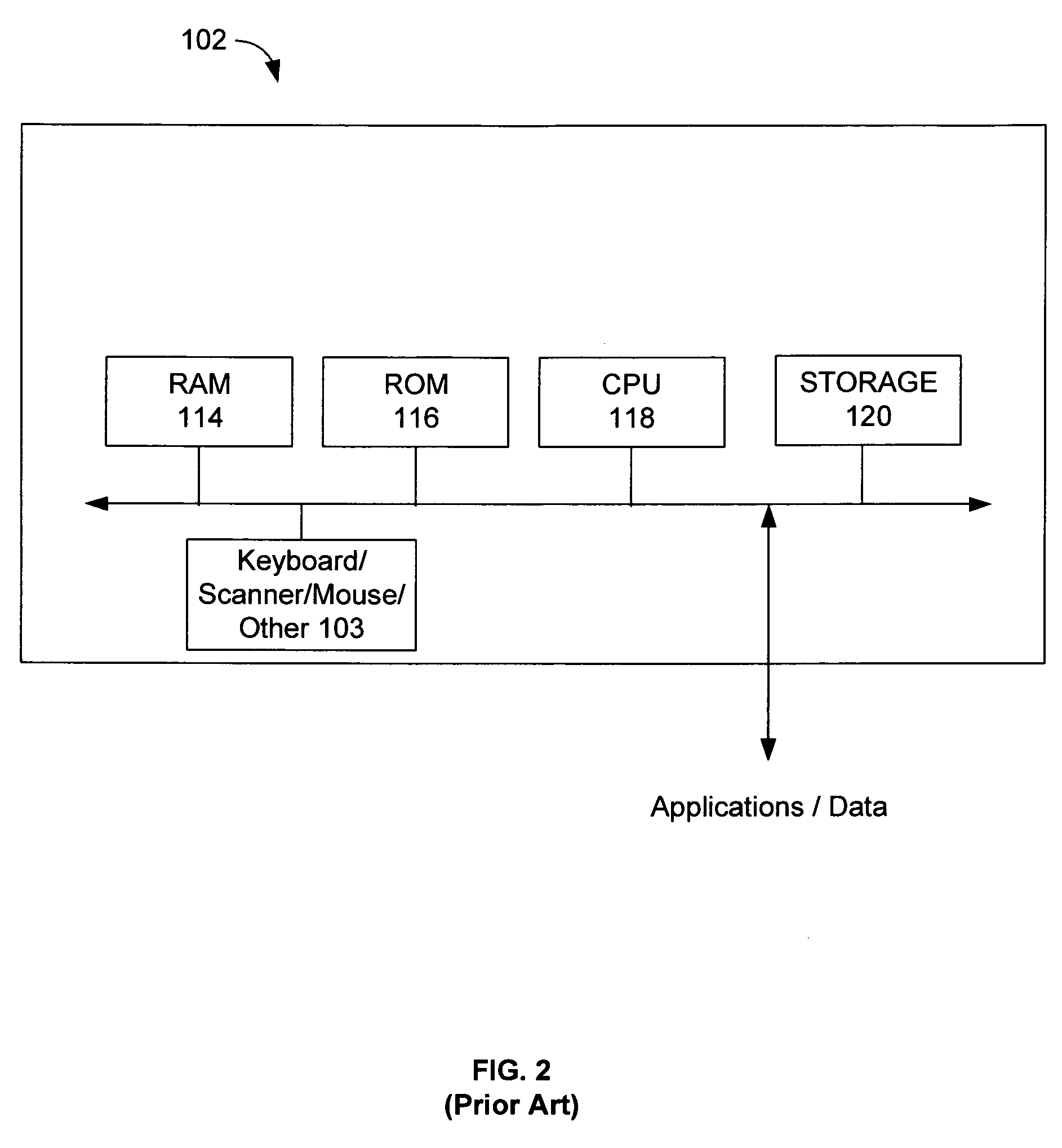Due to the discrete representation of the original function the problem of
aliasing arises, discussed below.
Typically, this integral is quite complicated and cannot be solved analytically.
As the integrands are very likely to be discontinuous, the standard
tensor product quadrature does not work well, especially for higher dimensions.
However, this method has only a
slow convergence and there are no real random numbers on computers anyway.
The closest-point problem arises, for example, in communication theory where lattices are applied both for modulation and quantization.
A further problem, discussed below, is that of lattice basis reduction and the related search for a lattice basis.
Other lattice problems include determining the kissing number or finding the Voronoi-relevant vectors.
However, few explicit constructions for good lattice points exist.
The task of calculating the
minimum distance between two lattice points is related to a well known problem in lattice theory.
But the methods presented there are not appropriate to rank-1 lattices, as they provide a special structure and are only considered for low dimensions.
The multiplication a·i mod n in equation 2.4 might also be problematic with respect to overflow.
But simply scaling a lattice ε[0, 1)2 to a rectangular region may not result in a uniform distribution of the points in the sense of (M, μ)-uniformity.
However, as a general matter, it is possible to simply choose the two shortest vectors because they do not necessarily form a basis.
One
disadvantage of this rasterization approach is that edges being almost vertical or rather horizontal appear very jagged due to the shape of the lattice cells.
However they only drew wire frames and could only display scenes of limited complexity.
This means that some additional energy, a so called “
alias,” is added to F(ω), which makes it impossible to recover F(ω) from its samples.
Even if the sampling theorem is fulfilled, artifacts may occur in the reconstructed
signal.
In such a case, the term used is “reconstruction errors” because of poor reconstruction filters, as opposed to
aliasing due to an improper sampling rate.
But since the
checkerboard provides many sharp edges, the problem arises of having a
signal with compact support in
signal space which cannot simultaneously have a compact support in
frequency space.
However, this approach has proven to be expensive to calculate or, in some cases, impossible due to a missing
analytic expression of the visible area.
According to the sampling theorem, any energy above the frequency 1 / 2p cannot be represented properly in the reconstructed signal and will therefore result in aliasing.
Hence we have to work with approximations like box-, Gauss- or truncated sinc-filters which may introduce new reconstruction errors.
Another
disadvantage of the
supersampling method described above is that the rendering time increases quadratically with n. Alternatively the sampling points could be placed randomly in every pixel.
Care has to be taken if the
noise is of
low frequency because this will result in more structured artifacts.
As already mentioned, boundary edges, texture discontinuities, and the like, cause high frequencies in the synthetic images to be rendered.
But complex geometry, textures, shading models,
motion blur, and the like, make prefiltering hardly possible.
Also, using an n×n grid per pixel cannot avoid aliasing in the case of a signal being not band-limited.
But since n points are needed in each dimension, the complexity of the
tensor product quadrature increases quadratically with the number of samples in the two-dimensional case.
This is due to the fact that the wrong integral has been computed, even if the integration was performed analytically.
Moreover, the disturbing aliasing artifacts are mostly turned into
noise.
Although the initial error norm for the max-min-dist lattices almost equals the value of uniform and jittered grid, the error declines very fast for an increasing number of samples.
Comparing these kinds of lattices with those where n is not necessarily relative prime to a, i.e., gcd(n, a)=1 is not checked for in the
search algorithm, reveals that the latter deliver worse results.
But it has been found that the error curves quickly nearly coincide.
This makes the image quite noisy, especially for low sampling rates.
This is mostly notable at the edges which get very noisy.
But it has been found that the shifted lattices converge much worse than the pure max-min-dist lattices being only inferior for a number of xRes·yRes·1 sampling points.
But since the images are quite noisy anyway, as indicated above, the additional
noise due to the
randomization hardly attracts attention.
Reconstruction errors occur, when the signal is incorrectly recovered from its samples.
This means that there is a small error bound when integrating numerically.
As discussed above, it is not possible to completely get rid of the artifacts by increasing the sampling rate, since on the one hand signals are typically not band-limited and on the other hand the wrong integral may be computed.
As we have seen above, the degree of the filter kernel determines the size of its support, which highly affects the run time of the rendering
algorithm.
One
disadvantage of the described filtering scheme is that there are no smooth transitions between the filter kernels.
Standard anti-aliasing procedures tend to blur such edges.
However, ignoring the subpixel color results in color fringing due to a color imbalance.
Furthermore we have to keep in mind, that CRT displays are not addressable on sub-pixel level.
 Login to View More
Login to View More  Login to View More
Login to View More 


